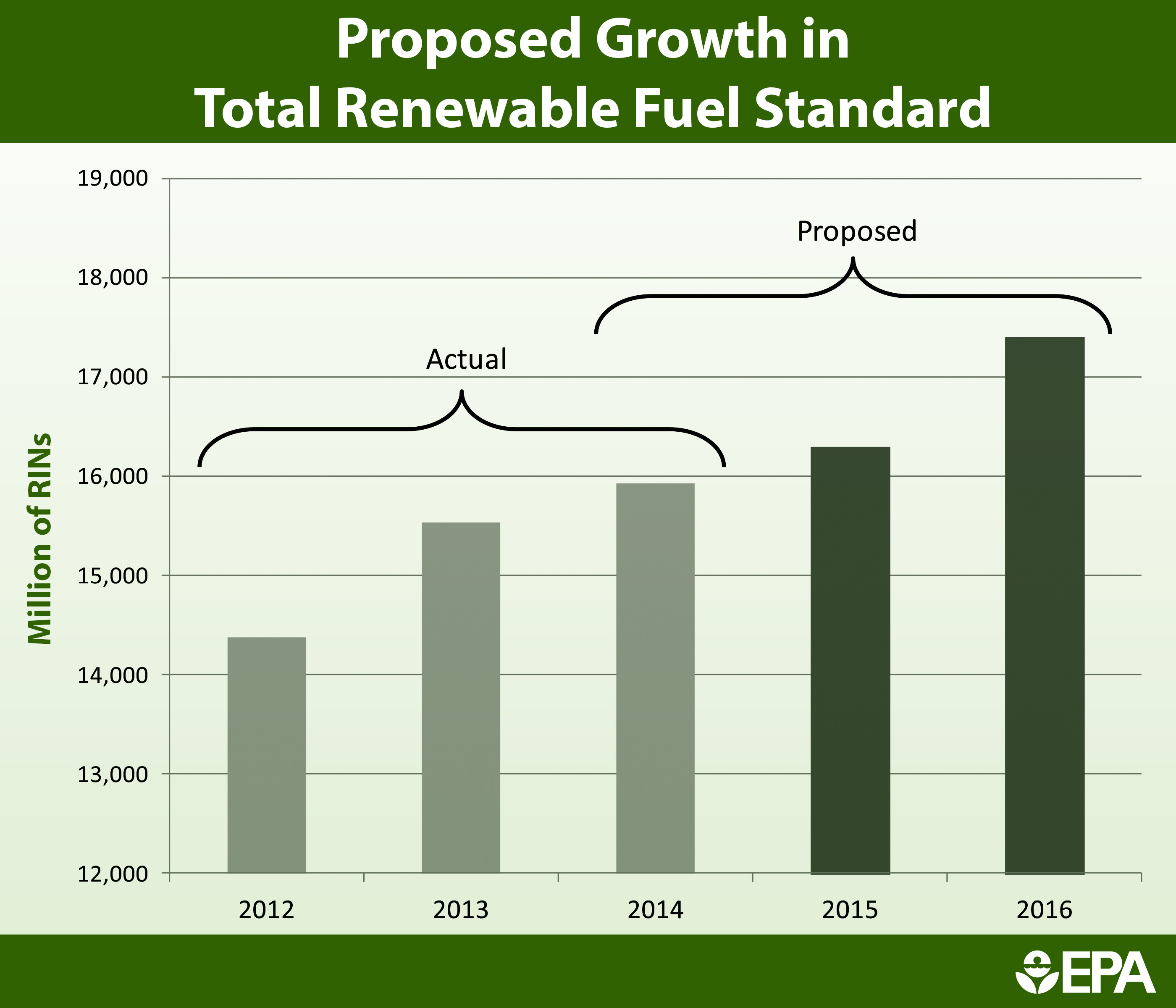Driving responsible growth in biofuels
The renewable fuels standards (RFS) program, established by Congress in 2007, aims to increase the volumes of renewable biofuels that are used in our transportation system, helping the United States move away from fossil fuels to less carbon-intensive fuels. The program seeks to reduce the pollution that contributes to climate change and improve energy security. When Congress passed the RFS, it set annual targets for biofuel use that increase every year through 2022. Congress also gave EPA the authority to adjust those target volumes downward in certain situations.
Today we proposed renewable fuel volume standards that establish a path for ambitious yet responsible growth in biofuels. These standards would provide the certainty the marketplace needs to further develop low-carbon fuels over the coming years. The proposed volumes reflect two realities:
- One – that Congressional intent is clear that renewable fuel production and use should grow over time. We have already seen success – renewable fuels are being produced and used in increasing volumes. This is true for both ethanol and biodiesel, and recently we have seen important developments in cellulosic biofuels (produced from sources like corn stover), which result in the lowest greenhouse gas emissions.
- And two – that there are real limits to the actual amounts of biofuels that can be supplied to consumers at this time. These limits include lower than expected demand for gasoline and constraints in supplying ethanol at greater than 10 percent of gasoline.
You may often hear of the “E10 blendwall.” This term refers to the amount of ethanol that could be used if all gasoline contains 10 percent ethanol and there are no higher-level ethanol blends, such as E15 or E85. Today, nearly every gallon of gasoline sold in the United States contains 10 percent ethanol. Providing more ethanol in the system will require blends of fuel with more than 10 percent ethanol, such as E85 (fuel with up to 85 percent ethanol) or E15. While these options are growing, they are not yet available widely. So this proposal will push the renewable fuel market beyond the E10 blendwall, as Congress intended, but in a responsible manner. In developing the proposed standards, EPA considered a range of scenarios that would enable the market to achieve the proposed standards, including ones where use of E85 increases substantially.
Because of the limitations that exist today, we are using the authority Congress gave the agency to adjust the volumes below the annual targets set in the original 2007 legislation. These proposed volumes are achievable in the timeframes under consideration. At the same time, the volumes steadily increase every year, reflecting Congress’s clear intent to drive up the nation’s use of renewable fuel.
Indeed, the proposed 2016 numbers will incentivize real growth in the market.
- The proposed 2016 standard for cellulosic biofuel – those fuels with the lowest GHG emissions profile – is more than 170 million gallons higher than the actual 2014 volumes. That’s six times higher than actual 2014 volumes.
- The proposed 2016 standard for total renewable fuel is nearly 1.5 billion gallons more, or about 9 percent higher, than the actual 2014 volumes.
- The proposed 2016 standard for advanced biofuel is more than 700 million gallons27 percent – higher than the actual 2014 volumes.
- Biodiesel standards grow steadily over the next several years, increasing every year to reach 1.9 billion gallons by 2017. That’s 17 percent higher than the actual 2014 volumes.
We are committed to increasing the use of renewable fuels through the RFS. At the same time, the U.S. Department of Agriculture and the U.S. Department of Energy are building programs that support biofuels, biofuel infrastructure and the many U.S. companies leading the way in this industry. We know that opportunities lie ahead for the biofuels sector as we work through the challenges we face in transforming the nation’s fuel supply. These proposals reflect the Administration’s confidence that renewable fuels can continue to steadily advance and grow.




 Each week we write about the science behind environmental protection.
Each week we write about the science behind environmental protection.  Living and working in the heart of the corn belt, I am continually confronted with the promotion of corn ethanol as the green solution to gasoline. As a researcher in
Living and working in the heart of the corn belt, I am continually confronted with the promotion of corn ethanol as the green solution to gasoline. As a researcher in